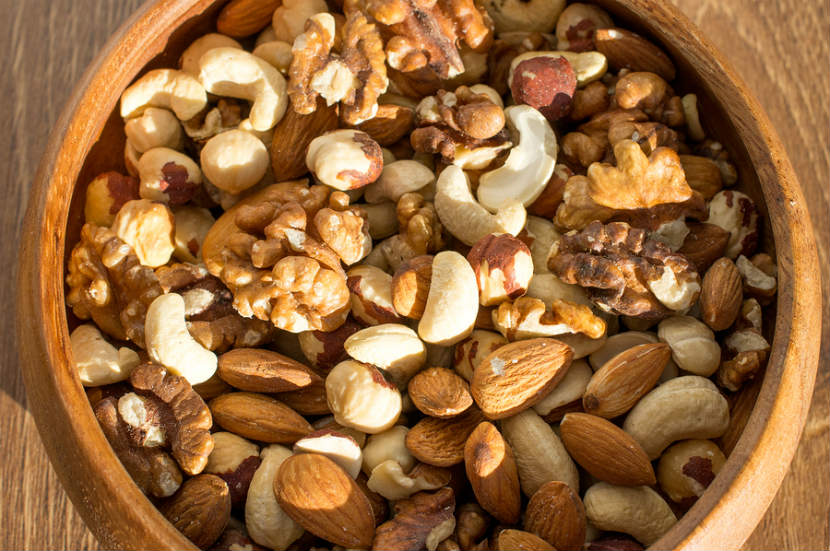Did you know that tree nuts are one of the most common food allergens in Canada? For people who are allergic, avoiding tree nuts and foods that contain tree nuts while still eating a healthy diet is important. Read on to get the facts on tree nut allergies.
What is a tree nut allergy?
A tree nut allergy is when the body’s immune system mistakes tree nuts as harmful. For some, tree nuts can trigger life-threatening reactions.
What are tree nuts?
- Tree nuts include:
- Almonds
- Brazil nuts
- Cashews
- Hazelnuts
- Macadamia nuts
- Pecans
- Pine nuts
- Pistachio nuts
- Walnuts
Peanuts are legumes and are not considered a tree nut. Learn more about peanut allergies here.
What are the symptoms of a food allergy?
Like other food allergies, having an allergic reaction to tree nuts can include any of the following symptoms:
- Flushed face, hives or a rash, red and itchy skin
- Swelling of the eyes, face, lips, throat and tongue
- Trouble breathing, speaking or swallowing
- Itchy skin
- Anxiety, distress, fainting, paleness, sense of doom and weakness
- Cramps, diarrhea, vomiting
- A drop in blood pressure, rapid heartbeat and loss of consciousness (in extreme cases)
When is a tree nut allergy usually diagnosed?
Treat nut allergies can be diagnosed in childhood and adulthood. However, they are most often diagnosed in early childhood.
If I am concerned about tree nut allergies, should I delay feeding it to my infant?
No. There is not enough evidence to say that avoiding tree nuts will lower the risk of an allergy. However, avoid whole nuts and chunky nut butters because they are choking hazards. Try smooth nut butters like almond or cashew, spread thinly on toast or crackers instead. Speak with your doctor if you have a concern about introducing specific foods to your infant.
Can a tree nut allergy be outgrown?
Not likely. Tree nut allergies in children are less likely to be outgrown compared to other common food allergies.
What foods may contain tree nuts?
Foods and drinks that often contain tree nuts include:
- Asian dishes like pad thai or chicken satay
- marzipan
- tree nut oils
- pralines
- spreads, like almond-paste spreads, cheese spreads and chocolate nut spreads
- vegetarian dishes
Food products that possibly add tree nuts include:
- baked goods
- baking mixes, cereals, crackers and muesli
- barbeque and pesto sauces
- dressings and gravies
- flavoured coffees
- frozen desserts
- liqueurs like amaretto
- natural flavourings and extracts, like almond extract
- salads
- snack foods like trail mix
What are other names for tree nuts?
Tree nuts can have many other names including:
- anacardium nuts
- hazelnuts (filberts)
- nut meats
- pinon
- macadamia (queensland nut)
Stricter Canadian guidelines require foods that have tree nuts to be clearly labelled. The ingredient list will say “contains: almonds, Brazil nuts, cashews, hazelnuts, macadamia nuts, pecans, pine nuts, pistachios or walnuts” if it contains these tree nuts.
Is it safe to eat peanuts if you have a tree nut allergy?
It can be. If you are only allergic to tree nuts, you can eat peanuts. However, some peanuts are cross contaminated with tree nuts when they are processed and manufactured. Consult with your doctor or allergist before consuming peanuts as part of your regular diet.
Tips for following a tree nut free diet
Keep these helpful tips in mind when following a tree nut-free diet:
- Look for the words “contains: almonds, Brazil nuts, cashews, hazelnuts, macadamia nuts, pecans, pine nuts, pistachios or walnuts” on the ingredient list. All tree nut-containing foods are now clearly labelled.
- Read the label every time. Food manufacturers often change ingredients used in their products without notice.
- Avoid food product labels that say “may contain” or “may contain traces” of tree nuts on their label.
- If you are unsure if a product contains tree nuts, contact the manufacturer. Many food packages have contact information on them.
- Don’t take chances. Avoid foods that do not have a clear ingredient list. This includes avoiding imported products, as they do not always have an accurate food label.
- Be informed. Sign up for the Canadian Food Inspection Agency’s (CFIA) free email “Food Recalls and Allergy Alerts” notification service.
- When eating out, ask if dishes have been prepared using tree nuts. If you can, call ahead to see if nut-free dishes are available.
- Instead of adding nuts to baking, try rolled oats, dried fruit or rice cereal for a satisfying texture.
- Looking for a mid-day snack that’s nut free? Try snacking on homemade granola on its own or add it to yogurt.
Bottom line
You can still eat a healthy balanced diet following Canada’s Food Guide if you have a tree nut allergy. If you aren’t sure if a product contains tree nuts, don’t take any chances. Carefully reading the ingredient list of food products every time is important to avoid an allergic reaction.
This article was published here:
https://www.unlockfood.ca/en/Articles/Allergies-and-Intolerances/Facts-on-Tree-Nut-Allergies.aspx

